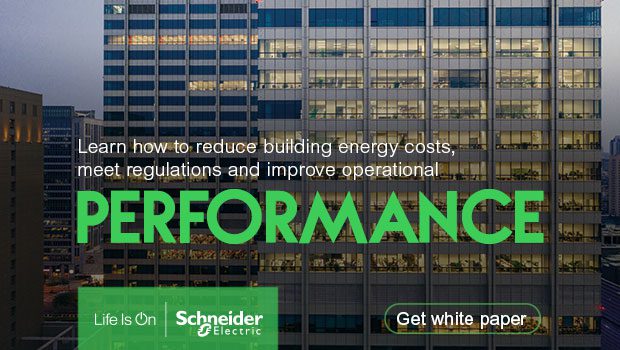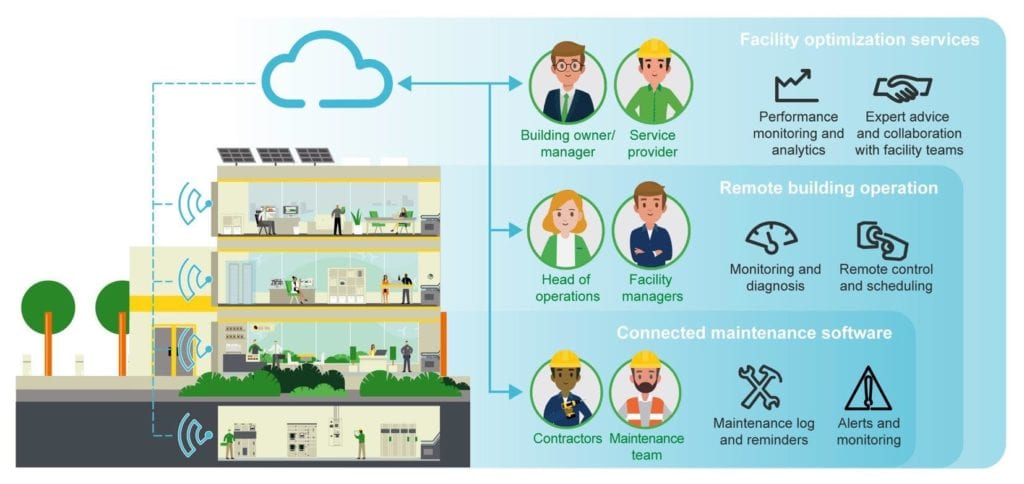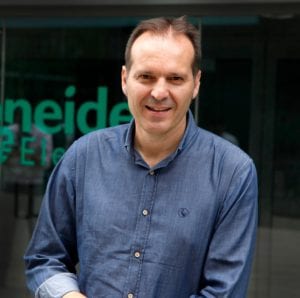Buildings are responsible for approximately 40% of energy consumption and over 30% of CO2 emissions, in both the EU and the U.S. For most facilities, energy consumption and equipment maintenance represent a large percentage of operating costs. For most, this has remained an untapped opportunity for improving energy and operational efficiencies.
However, energy costs continue to rise in most regions, environmental regulations continue to emerge, and maintenance costs keep increasing (partially due to the need to meet safety and maintenance standards). Faced with these realities, organizations need to find affordable ways to manage energy-related financial and operational risks.
 Fortunately, three new, cost-effective technologies and services offer simple and effective ways to improve energy efficiency, occupant comfort, productivity, and maintenance, while getting greater building performance from electrical distribution, HVAC and refrigeration systems. All of this is possible without increasing in-house staffing.
Fortunately, three new, cost-effective technologies and services offer simple and effective ways to improve energy efficiency, occupant comfort, productivity, and maintenance, while getting greater building performance from electrical distribution, HVAC and refrigeration systems. All of this is possible without increasing in-house staffing.
1. Connected maintenance software
Many small facilities depend on outsourced contract-based maintenance services. Connected maintenance software (CMS) is a cloud-based solution that enables a collaborative approach between facility managers and outside services.
Similar to traditional computerized maintenance management systems (CMMS), a CMS can log maintenance activities and provide an inventory of all electrical, HVAC, fire safety, lighting, and industrial systems. But CMS goes beyond by staying connected to assets, monitoring equipment performance, and alerting the facility manager and contractor of any immediate maintenance needs (e.g. rooftop unit needs filters cleaned, circuit breaker has tripped).
CMS mobile access improves efficiency of maintenance personnel, while data sharing across all stakeholders provides visibility to work progress, helps prioritize work, and reduces time for diagnosis and repair. It can also be used by contractors to simplify monitoring for multiple customer sites and to enable enhanced consulting services. Further, CMS can be used as a digital logbook by panel builders and contractors in the earlier building design and commissioning phases, capturing important documentation and history back to initial construction.
2. Remote building operation
Remote building operation platforms take advantage of the Internet-of-Things (IoT) by incorporating wireless sensors and controls. Enhanced connectivity also includes remote, mobile access to cloud-based data and equipment control capabilities.
The lower installed cost of an IoT-enabled platform makes remote building operation solutions affordable for small and medium-sized buildings, enabling a number of benefits. For example:
- Improved responsiveness to equipment problems, thanks to alerts sent to onsite staff or contractors.
- Automated temperature testing and reporting for refrigeration units to save time.
- Automated control scheduling, such as optimizing HVAC temperature and ventilation settings across multiple sites, and turning specific area lighting on or off in conjunction with store hours for energy savings.
Remote building operation solutions can also be combined with connected maintenance software to not only identify problems sooner, but to also help identify root causes and create work orders to resolve problems faster. The IoT cloud-based platform also offers contractors an opportunity to provide remote building management services.

3. Facility optimization services
To fully optimize building performance requires extensive energy intelligence and analysis expertise to uncover opportunities to reduce waste and save money. New, affordable facility optimization service options are becoming available that deliver valuable insights, advice, and return-on-investment calculations.
Wireless IoT-enabled meters and sensors track energy consumption and equipment conditions for all assets within each building. Cloud-based analytic software collects data from one or more buildings, delivering enterprise-wide visualization, detailed analysis, and customized reporting.
The key aspect of facility optimization services is the support of an expert service provider team. Service personnel continuously monitor conditions to detect inefficiencies and any risk conditions in power, energy, and equipment that manual methods would not be able to detect. There are a broad range of service types typically available:
- Building optimization services: Identify faults in HVAC and other systems before they become occupant complaints, proactively address building inefficiencies, and improve sustainability.
- Asset optimization services: Anticipate and address issues with electrical distribution assets before they become critical incidents, downtime, or safety risks. This also supports a transition from a preventative to a predictive maintenance approach.
- Energy optimization services: Achieve efficiency improvements, support energy conservation measures, enable ISO 50001 certification or green building rating, modernize electrical systems, and optimize energy contracts.
Service teams will also provide regular reporting and consultation, recommending to facility teams the best opportunities to conserve energy or correct reliability issues. Together, the two teams can collaborate on establishing budget and timeline for projects, tailoring solutions, and validating performance improvements and savings afterwards.
This collaboration helps mutualize expertise and increase in-house skills, which can accelerate success and payback over time. Navigant Research estimates that engaging outside expert services can often represent savings of up to 25% on energy bills and reductions of up to 12% on operational costs.
Click here to learn more about the complete range of Schneider Electric technology and services to help small and medium-size facilities improve building systems reliability and efficiency. To further learn more about this topic, discover our white paper “Top 3 technologies that improve energy and asset performance for buildings with limited resources.”



